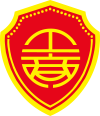- 收藏
- 加入书签
Delta’s long term strategy and industry competitive dynamics:A case study of the Airline Industry
◆Abstract:In this paper, we presented a holistic view of the airline industry. First, we narrowed our definition of the airline industry to only include three firms: Delta Air Lines, United Airlines and American Airlines, so we classify the market an oligopoly. Our Porter’s five forces analysis shows the large importance of the interdependence between firms in the market and the high barriers to entry, through which, we identified internal competition and power of buyers as the two most significant eroders of profit in the airline industry. The detailed analysis of Delta’s extent of horizontal and vertical integration shows that all three airlines were integrated horizontally to a similar degree. The main differentiator in terms of horizontal integration between the three is Delta’s innovative employee profit sharing plan. Finally, we analyzed how Delta’s choices towards horizontal and vertical boundaries have created competitive advantages for the firm and Delta’s revenue maximization strategy.
◆Keywords:Delta Airline; Airline Industry; Enterprise Strategy; Porter’s Five Forces
1.Introduction
Delta Air Lines, Inc. is one of the largest airlines in the world and one of the most recognizable brands in America. As one of the premier airlines both within the United States and internationally through its global SkyTeam partnership, Delta provides a high-quality product to an extremely wide range of destinations. This combination of quality and extensive service is only shared by two competitors: American Airlines and United Air Lines. The competitive dynamics of an oligopolistic market are much different than those of other market structures, and it will be helpful to consider the strategic choices of Delta through the lens of an oligopolistic market structure. Generally speaking, oligopolistic markets have high barriers to entry and firms in the market are very interdependent, meaning they take rival’s decisions into account when making theirs. (Agarwal, Prateek,2020) We will expand on these aspects of oligopoly and more when conducting a Porter’s five forces analysis of the airline industry.
2.Five Forces Analysis of the Airline Industry
The analysis below helps to reveal the competitive dynamics between Delta and its competitors and the airline industry overall. Furthermore, it will help us understand the factors which erode profits in the airline industry which will be particularly useful when we later examine Delta’s specific strategic choices.
2.1 Internal Rivalry
Internal rivalry between Delta, American and United is the main factor which erodes profits in the airline industry. Delta and its competitors offer flights, either directly or through their international partnerships, on almost all the same routes. This competition occurs both on a price level and a non-price level. On a non-price basis, Delta and its competitors compete on a quality basis and through various customer loyalty programs including multiple levels of price discrimination for different flying experiences and rewards programs both for repeat use of services and through partnerships with credit card companies.
2.2 Threat of Entry
Delta faces little threat of entry in terms of new competitors that could realistically match the scale and quality of its operation due to the considerable level of capital-intensity within the airline industry, the high degree of existing competition for gates at airlines and the economies-of-scale and experience Delta possesses (Wolla et al,2018).
2.3 Availability of Substitutes/Complements
Overall, the availability of substitutes is not a significant factor in eroding profit in the airline industry. There are no true substitutes to air travel for long-range trips. Additionally, there are no true complements to air travel. Delta and its competitors offer partnerships with credit card companies that help customers earn flight miles with other purchases, but this is a weak complement and does more to affect internal rivalry than complementary demand.
2.4 Power of Suppliers
Delta, United and American airlines are among the largest buyers of new aircraft from Boeing and Airbus globally(Gilbert&Nestor,2018).Boeing and Airbus are in such fierce competition that they cannot charge any of these three airlines in a way that would significantly erode profits without running the risk of losing business. Another important input into the airline industry is jet fuel. Jet fuel suppliers also typically do not erode industry profits in a significant way.
2.5 Power of Buyers
Overall, buyer power is a significant eroder of profit in the airline industry. Buyers hold significant power in the airline industry. Delta, United, and American all offer essentially identical products. Buyer concentration and volume are not significant factors. However, many airline buyers are extremely price elastic and are able to choose the cheapest supplier. Airlines have instituted customer loyalty programs which makes these business travelers, who are the gem of the airline industry, even more price inelastic (DePersio& Greg,2020).
3.The analysis of Delta’s Market Penetration
In 2019, Delta had a 17.5% share of the U.S. airline market and SkyTeam, Delta’s international partnership, held a 19% share of the global market. As a comparison, United held a 14.9% domestic market share and its international alliance, Star Alliance, held a 22% share of the global market. Finally American airlines had a 17.6% share of the domestic market and its international partnership OneWorld had a 15% share of the global market. Southwest, who we have identified as an emerging competitor to Delta, had a 14.9% share of the domestic market but an insignificant share of the global market. Clearly, all of the firms which we identified as direct competitors have deep market penetration both domestically and globally. Another factor to consider when assessing degree of market penetration is brand recognition. This factor can be hard to quantify, but in 2016 the Harris Poll named Delta the strongest brand in the travel industry (Savadelis&Liz,2016). This award shows that customers view Delta as a strong and quality brand and supports the fact that Delta has achieved a high level of market penetration.
4. Delta’s Strategic Choices in Integration and Revenue Maximization
Delta’s resurgence since 2005 has been a direct result of a combination of its long-term strategic plan both in choices concerning horizontal and vertical integration and in its treatment of the oligopolistic market that it operates in, as well as its pursuit of a benefit leadership strategy as a way to distinguish itself from major competitors in the eyes of consumers. At every level of the vertical and horizontal chain, firms are left with a choice: make or buy. Large, complex multinational airlines like Delta have to make this make or buy decision and many points along its chain. First, we will discuss agency and technical efficiency of Delta and its competitors in terms of horizontal boundaries. Then, we will discuss them in terms of vertical boundaries and how Delta ultimately forms a competitive advantage.
4.1 Horizontal Boundaries
The horizontal boundaries of the airline are pretty intuitive. Essentially all of Delta’s operations relate directly to providing airline services for passengers and cargo. Delta’s goal in this regard since emerging from bankruptcy has been to continuously expand its flight offerings and size of the airline. In pursuit of these goals, Delta has merged with Northwest Airlines, entered into partnerships with LATAM, Air France, Virgin Atlantic and KLM and bought minority stakes in AeroMexico and Hanjin-KAL. All of these moves have expanded Delta’s scale, scope and market share. These partnerships, known collectively as SkyTeam, significantly improve agency efficiency in terms of Delta’s ability to offer more flight path options and destinations through these many partnerships. These partnerships considerably reduce Delta’s transaction and contracting costs of arranging these flight agreements for every individual route with different airlines.
4.2 Vertical Boundaries
Delta has taken greater efforts to integrate vertically than other airlines. This has the general effect of lowering agency costs while increasing technical costs. Delta’s purchase of the Trainer oil refinery in Pennsylvania was a major move towards backwards integration. The move was designed to insulate Delta from fluctuations in jet fuel prices as well as ensure a steady supply of jet fuel to Delta’s northeast hubs in New York. It allowed Delta to reduce agency costs that result from negotiating jet fuel supply deals with third party refineries and distributors. On the other side, it increased Delta’s technical costs and required Delta’s leadership to learn how to operate a refinery business. In 2014, Delta made another move to improve its agency efficiency by reintegrating its reservations and flight operations systems at the price of increased technical costs (Rice&Kate,2014). Like the Trainer refinery, none of Delta’s competitors have integrated their reservations systems, opting instead to use third party companies. The final push towards vertical integration that Delta has pursued is Delta TechOps.
4.3 Competitive Advantage and Revenue Maximization Strategy
Delta’s competitive advantage is evidenced by its ability to consistently maintain higher margins than its competitors. Delta’s net profit margin in 2019 was 10.14% compared to 9.56% for United and 3.68% for American. First, Delta owns the Monroe Refinery, giving them roughly a 5 cents per gallon cost advantage on jet fuel. Delta also focuses heavily on attracting business travelers, which offer higher margins and the market for business passengers is less prone to price fluctuation. Through excellent customer service, delta successfully maintains and grows its customer base, and also partners with firms like American Express to succeed even further in its pursuit for business travelers. Additionally, it is important to note that the world’s busiest airport, Hartsfield-Jackson in Atlanta, is dominated by Delta. Potentially its most important source of competitive advantage is that Delta buys many used planes, while most competitors purchase new ones. Delta has managed to shift even more of its fixed costs to variable through its employee profit-sharing plan. This plan has kept Delta’s number of union workers extremely low relative to the industry. This allows Delta to offer lower base salaries than other airlines and shift this fixed cost to the variable cost of the profit-sharing agreement (Anderson & Richard H,2015).
5.Conclusion
In this paper, we presented a holistic view of the airline industry. First, we narrowed our definition of the airline industry to only include three firms: Delta Air Lines, United Airlines and American Airlines. From this industry definition, we were able to confidently classify the market an oligopoly. Our Porter’s five forces analysis clearly supported this market definition, showing the large importance of the interdependence between firms in the market and the high barriers to entry. Also from the five forces analysis, we identified internal competition and power of buyers as the two most significant eroders of profit in the airline industry.
Armed with this understanding of the market forces affecting the airline industry, we then performed a detailed analysis of Delta’s extent of horizontal and vertical integration and how these compared to American and United. We found that all three airlines were integrated horizontally to a similar degree. The main differentiator in terms of horizontal integration between the three is Delta’s innovative employee profit sharing plan through which it has managed to keep its employee unionization rates significantly lower than the industry average. As for vertical integration, we found that Delta is vertically integrated to a much higher degree than its competitors. This extent of vertical integration includes owning the Trainer oil refinery to produce jet fuel, controlling its own reservations and flight operations systems and operating its own MRO operations. This level of vertical integration affords Delta greater control over the quality of its product which is an important strategic differentiator for the company.
From there, we analyzed how Delta’s choices towards horizontal and vertical boundaries have created competitive advantages for the firm and Delta’s revenue maximization strategy. Our main finding was that Delta puts intense focus on a benefits leadership strategy. To this end, they seek to deliver an extremely high-quality product. To accomplish this, Delta has put an intense focus on customer service by having industry-leading customer loyalty programs, in-flight service, world-class airport lounges and more. Although Delta pursues a benefits leadership strategy, it still seeks to constrain costs in its efforts to maximize revenue. In consideration of that, Delta has used its Trainer refinery to keep down jet fuel prices, reduced cost of wages through its profit-sharing program, and opted for purchasing and re-outing used planes instead of buying new planes. Taken together, Delta’s cost management and benefits leadership strategies have allowed Delta to earn industry-leading profit margins.
References
1.2019 Annual Report. Atlanta, Georgia. Delta Airlines Inc & Annual Report. Washington, DC. United Airlines Inc.
2.Anderson, Richard H. “Delta's CEO on Using Innovative Thinking to Revive a Bankrupt Airline.” HBS - Competitive Strategy. Harvard Business Review, March 19, 2015.
3.Agarwal, Prateek. “Oligopoly Market Structure.” Intelligent Economist, May 21, 2020.
4.C, Sam. “Delta Airlines: Flying High in a Competitive Industry.” Technology and Operations Management. Harvard Business Review. Accessed April 5, 2021.
5.DePersio, Greg. “Analyzing Porter's Five Forces Model on Delta Airlines.” Investopedia. Investopedia, August 29, 2020.
6.Hayward, Justin. “How Airline Ticket Pricing Works.” Simple Flying, October 22, 2020.
7.“How Delta Uses Cost Advantages to Soar Above Competition.” Smart Advantage, January 28, 2021.
作者简介
黎子墨(1998.04—),男,汉族,湖北省武汉市人,佐治亚理工学院经济学硕士。研究方向:计量经济和数量经济。
About the author:
Zimo Li, male, born in April 1998 in Wuhan, Hubei Province, China, Han nationality. Master of economics, Georgia Institute of technology.
Research interests: Econometrics and quantitative economy.






 京公网安备 11011302003690号
京公网安备 11011302003690号


